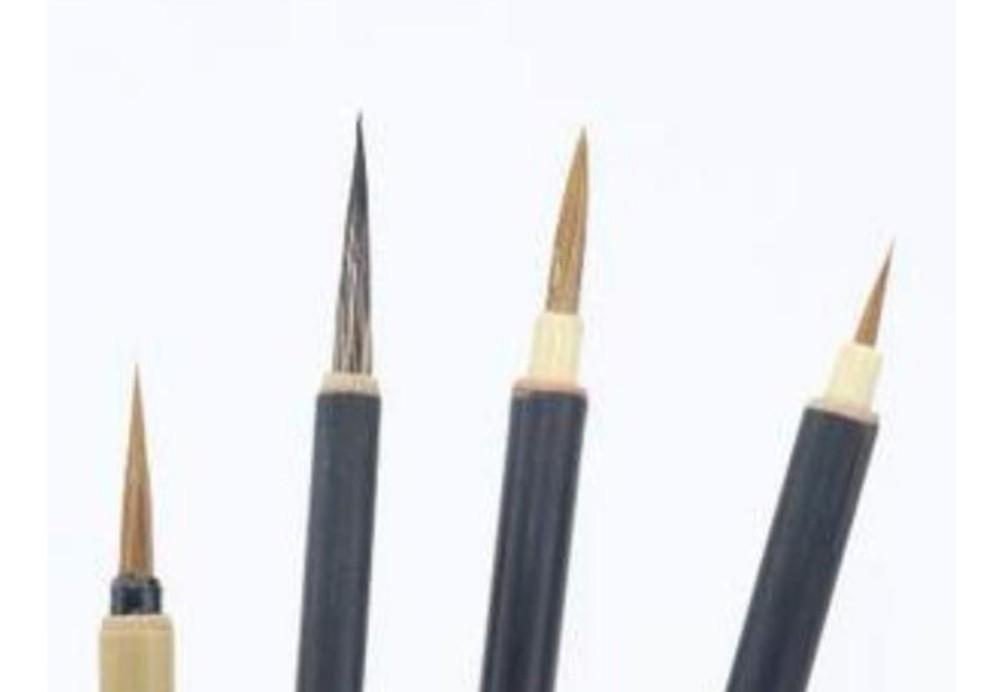The gain or loss of the outline in the white stroke means the failure of the work. Therefore, since ancient times, painters have attached great importance to outlining and pay attention to the calligraphy in Chinese paintings to ensure the artistic effect.
The pattern of the line. As already mentioned earlier, the role of the line is to shape the physical structure and demeanor of the object. Where these lines are used inversely, where they are used in accordance with the rules, where they should be traveled, and where they should be ought, depends on the characteristics of the pictographic structure. The difference between thickness, length and length, and discontinuity, and the difference between thick and light, dry and wet, dry and dry, and light hair: the nature of the line, there are differences between rigidity and softness, dynamic and static, soft and hard, and virtual and real: the brushwork of the line, there are also the differences between pressing, pressing, turning, and speeding. The different effects of these lines can be achieved through different pen and ink オ. The ancients said: "The next pen has a convex and concave shape", which shows the importance of using a pen in the hook line.

The method of using the pen is related to the deviation of the pen edge and the smoothness of the pen path. Positive edge, also known as center forward, the pen is relatively upright, the pen edge is perpendicular to the paper, the tip of the pen is on the paper, and the running pen edge is often located in the center of the stroke. The lines drawn are round and thick, and this line is often used in white painting flowers. Another type of flanking, also called a side forward, is more oblique. The stroke is often on one side of the stroke, and the lines drawn are loose and changeable.
The pen is top-down, or left-to-right, called a stroke. For example, the pen is from bottom to top, or from right to left, it is called a reverse pen. Because the painting is written with the right hand, the smooth brush is smooth and natural, and the reverse pen must be pushed by the wrist force, and the beginner should not be handy, and must be practiced frequently in order to gradually master.
Chinese books and paintings have the same origin, and later due to people's different needs, they have gradually developed into two completely different art forms. However, its brushwork is still closely related to this day, especially white painting, and many pen and ink techniques commonly used in calligraphy have been widely used and achieved due results, which is also a feature of Chinese painting.
Zhao Meng, a calligrapher and painter of the Yuan Dynasty, once said: Shi Rufei white wood plus tumors, writing bamboo should also be eight methods of mastery, "so to learn Chinese painting, you must also practice calligraphy, which is of great help to the use of thread."
Penmanship, Penmanship. It is necessary to rely on the accurate and flexible control of the fingers, wrists, hours and arms. Short-term transport fingers, mid-line wrist lifting, long-term suspension, in order to run freely, force through the back of the paper. In the outline, the pen should refer to the real palm, comfortable and natural; in the line of the pen, the wrist should be rotated, and the force should be up and down. The setbacks are well documented, the movements are round, the light and heavy are clear, and the thickness is appropriate.
As mentioned earlier, the role of the line is to shape the physical structure and demeanor of the object. Where these lines are used inversely, where they are used in accordance with the rules, where they should be traveled, and where they should be ought, depends on the characteristics of the pictographic structure.
For example, the positive front draws a rounded and smooth line to express the delicacy of flowers and leaves; the flank outlines a loose and changeable line to express the roughness of the old dry. The straight line of the twist and turn expresses the thinness of the branch: the gentle and smooth curve, expressing the flexibility of the vine. The thickness of the line reflects the change of light and shade, the virtual reality of the line, and the spatial distance. Light lines, depicting flowers; thick lines, describing branches and leaves. Dried branches, first and then done: the foliar surface is hooked, and the harvest is false. The edges of the petals are wrinkled, and the decent transformation is shown in a pen: the outer layer of the branch is undulating, and the structural changes are expressed by the pen.
In short, the line changes with deformation, the pen is fixed according to the line, and the example can be analogous.
In the copying study, you can choose a good model with accurate shape and vivid hook line, and often carry out the basic practice of hook line to exercise the flexible use of the pen. For example, in the practice of starting and closing the pen, we must pay attention to the use of various methods such as Hidden Front, Dew Front, Dun Feng, Shun Feng, Real Harvest, and False Harvest.
In the practice of writing and moving pens, we can combine the traditional experience of calligraphy, such as "horizontal pen vertically, vertical pen horizontally down", "no hanging, no shrinking, no going, no collection" and other specific measures, to study the essentials of penmanship changes, such as straight forward and retreat, side line, slow speed, flat folding circle rotation, Teton interspersed, curved and straight changes, long and short virtual and virtual, dot skimming and other strokes, etc., to prevent the formation of weakness and weakness in the hook line, colorless, unclear setbacks, thickness and thickness, floating grass, chaotic, vain and reckless, pen damage and shape god and other biases.
Come and have an exchange